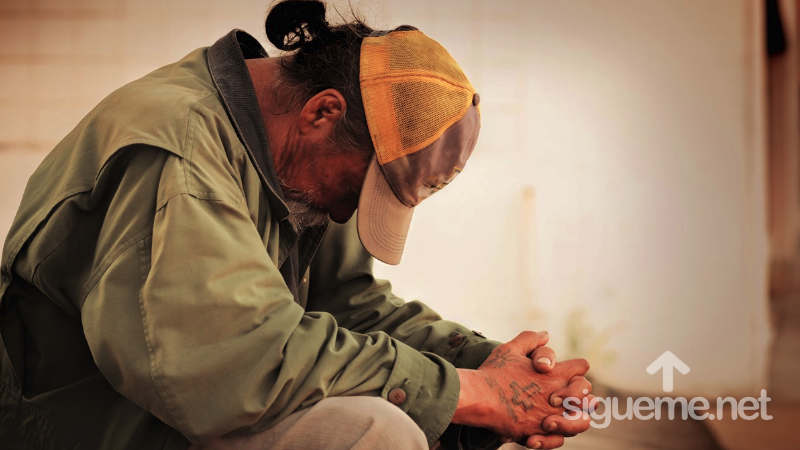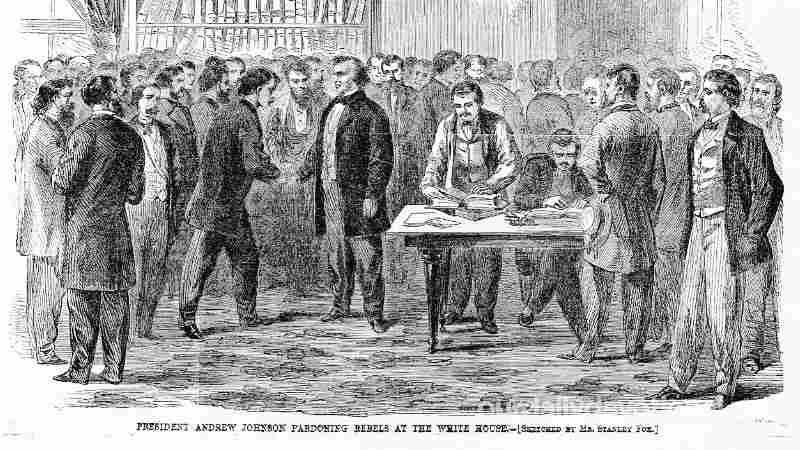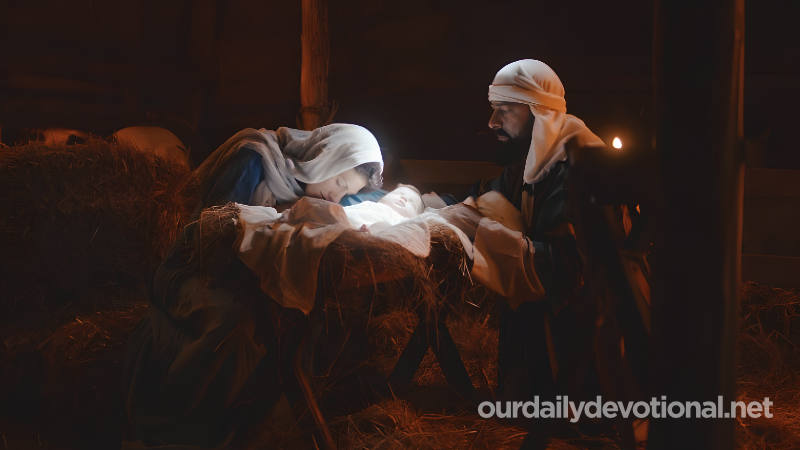The Bible, rich in parables and comparisons, very frequently uses types, symbols and allegories to illustrate abstract or still distant truths when they were given in the form of types. The term gr. is "typos", which in the Reina-Valera version is never translated as "type" the sixteen times it appears, and it is
"sign" (John 20:25);
"figure" (Acts 7:43; Rom. 5:14);
"model" (Acts 7:44; Heb. 8:5);
"in these terms" (Acts 23:25);
"form" (Rom. 6:17);
"example" (1 Cor. 10:6, 11; Phil. 3:17; 1 Thes. 1:7; 2 Thes. 3:9; 1 Tim. 4:12; Tit. 2:7; 1 Pet. 5 :3).
These translations are those of the 1960 revision. In the 1977 version, "example" is changed to "model" in some passages.
Paul sees an allegory in Abraham's two wives: Hagar and Sarah. Hagar represents the Old Covenant, the Jewish Jerusalem, whose children remain under bondage. Sarah, on the contrary, is the type of the New Covenant, of the "heavenly Jerusalem, of which believers in Christ are the free children, born according to the Spirit" (Gal. 4:22-31).
The Tabernacle, the Levitical cult, and the Levitical priesthood were intended to represent in symbols all that Christ, our high priest, accomplished for our salvation before God (see TABERNACLE).
Thus, the ritual instituted by Moses is "a figure and shadow of heavenly things" (Heb. 8:4-5).
The terrestrial sanctuary was, in reality, a "figure of the true one," copied from the model shown by God to Moses on Mount Sinai (Heb. 9:11, 24; Ex. 25:40); He offers us “figures of heavenly things” (Heb. 9:23).
Through the detailed arrangement of the Tabernacle, the description of its utensils, and the isolation of the Holy of Holies, the Holy Spirit implied (cf. Heb. 9:8) that God could not yet admit sinners into his presence; It was all a "figure" for the entire time of Jewish ritual observance (Heb. 9:9).
The ordinances regarding food, festivals, and Sabbaths were also “a shadow of things to come,” the body being that of Christ (Col. 2:16-17).
Thus, it is perfectly legitimate to seek to understand, if there is room, the symbolic meaning of the Scriptures. However, to avoid falling into harmful exaggerations and being known for mere subjectivism guided by the imagination, it is prudent to observe the following points:
(a) A meaning of a type that is not expressly indicated by the NT cannot be given dogmatically.
(b) If NT confirmation is lacking, such a type can only be used as an analogy or illustration.
(c) It is also good to remember that if an OT type finds its fulfillment in its antitype in the NT, it has no reason to subsist by itself, nor to be introduced just like that into the New Covenant. For example, the Jewish Sabbath was the shadow of Christ's rest (Col. 2:16-17; Heb. 4:9-11; see SABBATH).
Having been given the reality in the Gospel, there is no longer any need for "the shadow", which was the legal obligation. In the same way, the priestly vestments, the ablutions of the sea of bronze, the animal sacrifices, the shewbread consumed by the priests, all these "figures" that found their fulfillment in Christ, have fulfilled their role, and not They take place in the present age of grace (Heb. 9:9-10).
Regarding the sacrifices and ritual presented in the book of Ezekiel to take place in the millennial temple (Ez. 40-48), see EZEKIEL (BOOK OF); Alexander, R.: «Ezequiel» (Pub. Portavoz Evangelico, Barcelona, 1979); Ryrie, C. C.: "The Bases of the Premillennial Faith" (Pub. Portavoz Evangelico, Barcelona, 1984).
A few examples of types can be added. Scholars of the Scriptures will benefit greatly from studying the OT types with their NT antitypes. The types are classified under four headings: (a) persons; (b) places; (c) things and animals; (d) events.
1. PEOPLE.
Adam, as the first man, under whom all created things were placed, type of Christ, the last Adam, who is head over all things, the second man (Gen. 1:28; Rom. 5:14; Heb. 2 :7).
Eve, formed from Adam's rib, and declared bone of his bones and flesh of his flesh, is a type of the Church, of those who in their relationship with Christ are members of His body, His flesh and His bones (Gen. 2:22, 23; Eph. 4:16; 5:30).
Cain, ignoring the fall of man, and coming to God with an offering that was the fruit of the ground cursed by Him, and then killing his brother, became a type of evil in the natural man by offering to the Holy God is that which He cannot accept justly, and also a type of His rejection of Christ (Gen. 4:3; Acts 17:23, 25; Heb. 11:4; 1 John 3:12).
Isaac, offered and received as from the dead, a type of Christ in his death and resurrection (Gen. 22: 1-18; Heb. 11: 17-19; Rom. 4:25; Gal. 3:15, 16).
Others that may be considered are Enoch, Melchizedek, Joseph, Moses, Aaron, Joshua, Boaz, David, Solomon, Zerubbabel, Cyrus, Hagar, Ahithophel, etc.
2. PLACES.
Egypt, as a place where the Israelites were subjected to harsh servitude by the Egyptians. It is a type of the world in which humanity is enslaved by Satan, the god of this world (Ex. 2:23; 2 Cor. 4:4; Gal. 1:4; 1 John 5:19).
Zion, as the place where David pitched a tent for the ark, and where he established his throne, ruling over God's chosen people. It is a type of the liberating grace established in power and blessing in Christ. Zion is yet to be the seat of Messiah's power on the earth in millennial blessing (Ps. 2:6; 78:68-72; Rom. 5:21; Heb. 12:22; Rev. 14:1).
Babylon, as a center of idolatry and pagan apostasy, turning its back on God, and being the abode of corruption in all his power. Type of Rome, nucleus of apostate and earthly Christianity (Gen. 11:1-9; Is. 14:4-23; Dan. 4:30; Rev. 17; 18).
Others that can be considered are Sodom and Gomorrah, Jericho, Gilgal, Assyria, Tyre.
3 THINGS AND ANIMALS.
The manna given by God from heaven and the Israelites. It is a type of heavenly grace for those who are in the desert, Christ being the true Bread that came down from heaven (Ex. 16:15; Jn. 6:31-33).
The bronze serpent that was raised by Moses, looking at which life was obtained. It is a type of the condemnation of sin in the flesh in the death of Christ, lifted up on the Cross, which thus became the door to eternal life (Num. 21:8, 9; Jn. 3:14; Rom. 8 :3).
The well of water as God's provision, dug in the desert, and before which Israel sang: "Come up, oh well." It is a type of the Holy Spirit, compared to "a fountain (Gk., "a well") of water springing up to eternal life" (Num. 21:17, 18; John 4:14). (See WELL.)
The atoning victim burned outside the camp is a type of Christ, suffering for us "outside the gate"; the believer must, in turn, follow him “out of the camp, bearing his reproach” (Lev. 4:11-12; Heb. 13:11-13).
The Passover lamb, without blemish, is a type of the true and holy Lamb of God slain for our redemption (Ex. 12:5-7; 1 Cor. 5:7; 1 Pet. 1:19-20; cf. Jn 1:29; Rev. 5:6-14, etc.).
The two goats (which constituted a single sin offering, cf. Lev, 16:5), one of which was sacrificed and the other taken to the desert. They were a type of the double effect of the death of Christ, which satisfies all the demands of a holy God, so that He no longer remembers the sins of His people, and removes from them all imputation of sin (Lev. 16:8, 9, 21; Heb. 10:12, 17; 1 Jn. 1:7).
Others that may be considered are the various offerings, the Tabernacle and its objects, the beaten rock, the cedars, the vine, etc.
4. EVENTS.
The Flood (Gen. 7:11-24). It is a type of the sudden destruction that will come upon a guilty world (Luke 17:26-27).
The exodus and the crossing of the Red Sea (Ex.12:14). They constitute a type of redemption (Col. 1:13; Heb. 2:14-15).
Others that can be considered are the incidents that occurred to Israel in the desert (cf. 1 Cor. 10:11), the crossing of the Jordan, the return of the remnant of Babylon, etc.
Although most of the types presented in the previous paragraphs come from the Pentateuch, it is easy to find other examples of symbolism in the rest of the Bible: Jeremiah's belt (Jer. 13:1-11), the potter's vessel (Jer. . 18:2-10), the symbolic actions of Ezekiel that so painfully prefigure the sufferings of Israel (Ez. 2:2-3:3; Ez. 3:24-27; 4:1-17; 5 :1-5, 12; 24:16-24).
Each of these symbols is interpreted in the same text. For symbols of the Holy Spirit, see HOLY SPIRIT. In Revelation, much of the language is symbolic. Fortunately, most of the images are explained in the text.
Thus, the seven lampstands of Rev. 1:12 "are the seven churches" of Asia (Rev. 1:20), the sharp two-edged sword that proceeds from the mouth of Christ is His word of judgment (Rev. 1:20). 16; 19:15, 21; Isa. 11:4; 2 Thes. 2:8), the smoke of the perfumes burned on the golden altar represents the prayers of the saints ascending to God (Rev. 5:8; 8:4); The fine linen in which the church is clothed “is the righteous deeds of the saints” (Rev. 19:8). There are many more symbols and types that could be added.
There is great scope for developing the rich teachings and multitude of images of biblical types and symbols, remaining under the guidance of the analogy of the Scriptures, and in subjection to the illuminating ministry of the Spirit. It must be remembered, however, to remain within the biblical limits, not letting the imagination fly by "allegorizing", as some of the Church Fathers did, and thereby emptying the most concrete facts of history of their real and definitive meaning. the history of salvation and the world to come.
Meaning of TYPE, TYPOLOGY
The Bible, rich in parables and comparisons, very frequently uses types, symbols and allegories to illustrate abstract or still distant truths when they were given in the form of types.







